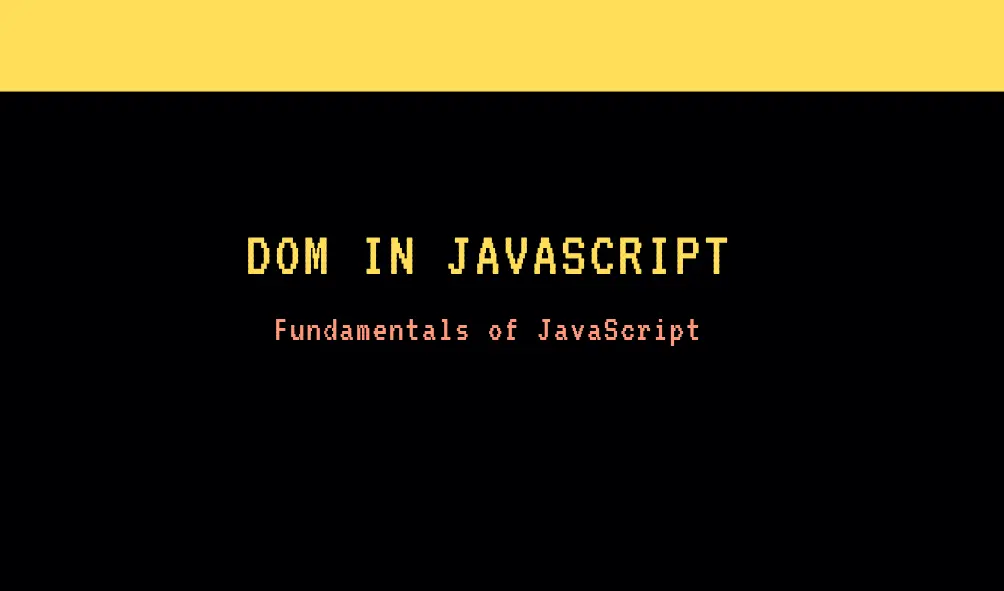
Understanding the Document Object Model (DOM) in JavaScript
10. Document Object Model (DOM)
The Document Object Model (DOM) is a programming interface for web documents. It represents the structure of HTML documents as a tree-like structure, where each node represents an element, attribute, or piece of text in the document. The DOM provides a way for JavaScript to interact with and manipulate the content, structure, and style of web pages dynamically.
Core Concepts of the DOM:
- Document Object Model:
- The DOM represents the structure of an HTML document as a tree of nodes.
- Each node corresponds to a different part of the document, such as elements, attributes, or text.
- Nodes:
- Nodes are the building blocks of the DOM tree.
- The main types of nodes are:
- Element nodes: Represent HTML elements (e.g.,
<div>,<p>,<h1>). - Text nodes: Represent text content within elements.
- Attribute nodes: Represent attributes of elements.
- Element nodes: Represent HTML elements (e.g.,
- Traversal and Manipulation:
- JavaScript can traverse the DOM tree to access nodes and manipulate their properties, attributes, and content dynamically.
- DOM manipulation includes operations such as adding, removing, or modifying elements, attributes, and text content.
Important DOM APIs:
- Document Object:
- The
documentobject represents the entire HTML document. - It provides methods for accessing and manipulating elements, such as
getElementById(),querySelector(),createElement(),appendChild(), etc.
- The
- Element Object:
- Element objects represent HTML elements in the DOM tree.
- They provide properties and methods for working with elements, such as
textContent,innerHTML,setAttribute(),classList, etc.
- Node Object:
- The
Nodeinterface is the base class for all types of nodes in the DOM. - It provides properties and methods common to all nodes, such as
parentNode,childNodes,appendChild(),removeChild(), etc.
- The
- Event Handling:
- The DOM provides mechanisms for handling user events, such as mouse clicks, keyboard inputs, and form submissions.
- Event handling APIs include methods like
addEventListener(),removeEventListener(), and properties likeonclick,onmouseover, etc.
- Traversal:
- DOM traversal APIs allow you to navigate and search the DOM tree.
- Methods like
parentNode,childNodes,firstChild,lastChild,nextSibling,previousSibling,querySelector(), andquerySelectorAll()facilitate traversal and selection of elements.
Example:
<!doctype html>
<html lang="en">
<head>
<meta charset="UTF-8" />
<meta name="viewport" content="width=device-width, initial-scale=1.0" />
<title>DOM Example</title>
</head>
<body>
<div id="container">
<h1>Hello, DOM!</h1>
<p>This is a paragraph.</p>
<button id="myButton">Click Me</button>
</div>
<script>
// Accessing elements and modifying content
const heading = document.querySelector('h1');
heading.textContent = 'Manipulated Heading';
// Creating and appending elements
const newParagraph = document.createElement('p');
newParagraph.textContent = 'This is a new paragraph.';
document.getElementById('container').appendChild(newParagraph);
// Handling events
document.getElementById('myButton').addEventListener('click', function () {
alert('Button clicked!');
});
</script>
</body>
</html>
In this example:
- We access elements using methods like
querySelector(). - We modify element content using properties like
textContent. - We create new elements using
createElement()and append them usingappendChild(). - We handle the button click event using
addEventListener().
The DOM provides a powerful interface for JavaScript to interact with web documents dynamically, enabling the creation of dynamic and interactive web applications. Understanding the DOM and its APIs is essential for front-end web development.
